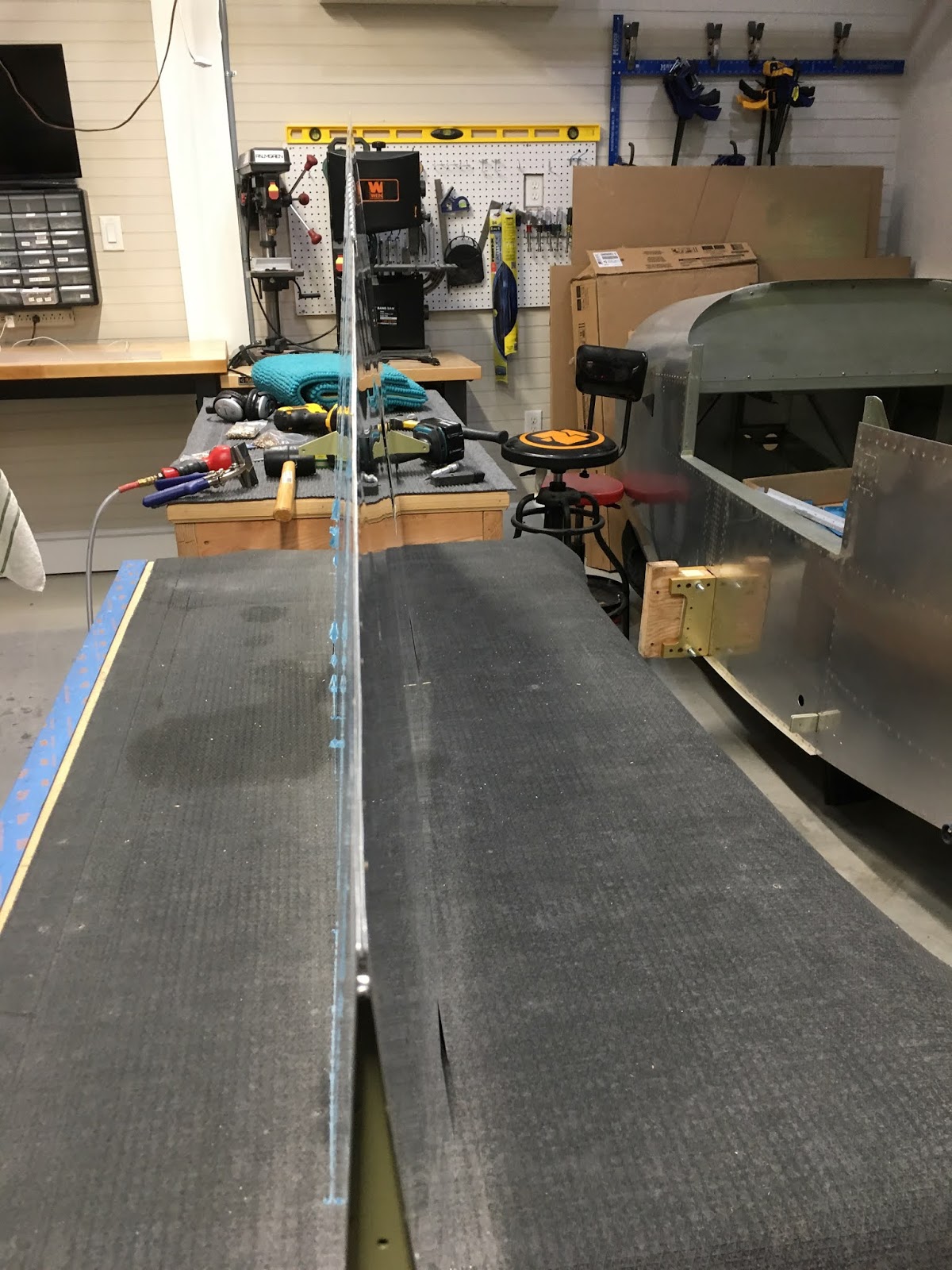I'm ordering my 3rd rudder assembly for my 14 kit tomorrow. Why? Because the first rudder I built the trailing edge skins bowed outwards at the bottom and top end, as well as having gaps between the skins and TE itself, and the TE came out wavy. I'm a beginner, notwithstanding the fact that my VS came out flawless, so I had no issue ordering a new rudder and figured, since the rudder is one of the more complex components to build on this bird, I was all too happy to learn from previous mistakes. However, in speaking with the Van's advisor at the factory before I ordered the second kit, he said that the 3M VRB tape I used was a reason the corners of the skins may have bowed out, since it wasn't "sticky" enough, and he said that's why some people use RTV or the material used to seal the fuel tanks. I didn't want to mess with either of that stuff so early in my build, and I found a VRB double-sided tape that was thick. I had an "aha!" moment, thinking that was the VRB tape I should've used, and that tape would go on easy and do what the RTV or sealant material does. Wrong. When I went to rivet my TE this morning, the heads on the squeezer (I had ordered the angled heads made for the TE from Cleaveland Tools) just created huge craters in my TE skin because the skins "sank" into the underlying VRB material. I'm really annoyed because notwithstanding the TE issue I now have, this rudder came out flawless otherwise.
I have two questions for the learned minds on this forum:
1. What is the purpose of using tape or some filler on the TE, and can I put the TE together without any underlying material? I've read that it's to hold the TE triangle in place on the right skin when we are bowing the left skin into place in order to rivet the stiffeners on the two halves together. However, using cleco's along the TE will accomplish the same thing. When I folded the left skin onto the right on both rudder builds, I had cleco'd every hole on the TE, and as I riveted the stiffeners together, I pushed the cleco's below the last riveted stiffeners all the way through both skins along the TE. Both times I wondered why any sticky material was even required.
2. From everything I've read, the rudder is one of the most complex components to build. Why does Van's not make a simpler build design, especially since this is only the second component being built by greenhorn ignorant newbies such as myself? On other, earlier RV kits, the rudder skin was one-piece that slipped onto the rudder frame, with the TE being a folded corner. Seems to be a far easier build methodology.
Sorry for the long-winded post. I'm just really frustrated at this point.
I have two questions for the learned minds on this forum:
1. What is the purpose of using tape or some filler on the TE, and can I put the TE together without any underlying material? I've read that it's to hold the TE triangle in place on the right skin when we are bowing the left skin into place in order to rivet the stiffeners on the two halves together. However, using cleco's along the TE will accomplish the same thing. When I folded the left skin onto the right on both rudder builds, I had cleco'd every hole on the TE, and as I riveted the stiffeners together, I pushed the cleco's below the last riveted stiffeners all the way through both skins along the TE. Both times I wondered why any sticky material was even required.
2. From everything I've read, the rudder is one of the most complex components to build. Why does Van's not make a simpler build design, especially since this is only the second component being built by greenhorn ignorant newbies such as myself? On other, earlier RV kits, the rudder skin was one-piece that slipped onto the rudder frame, with the TE being a folded corner. Seems to be a far easier build methodology.
Sorry for the long-winded post. I'm just really frustrated at this point.





